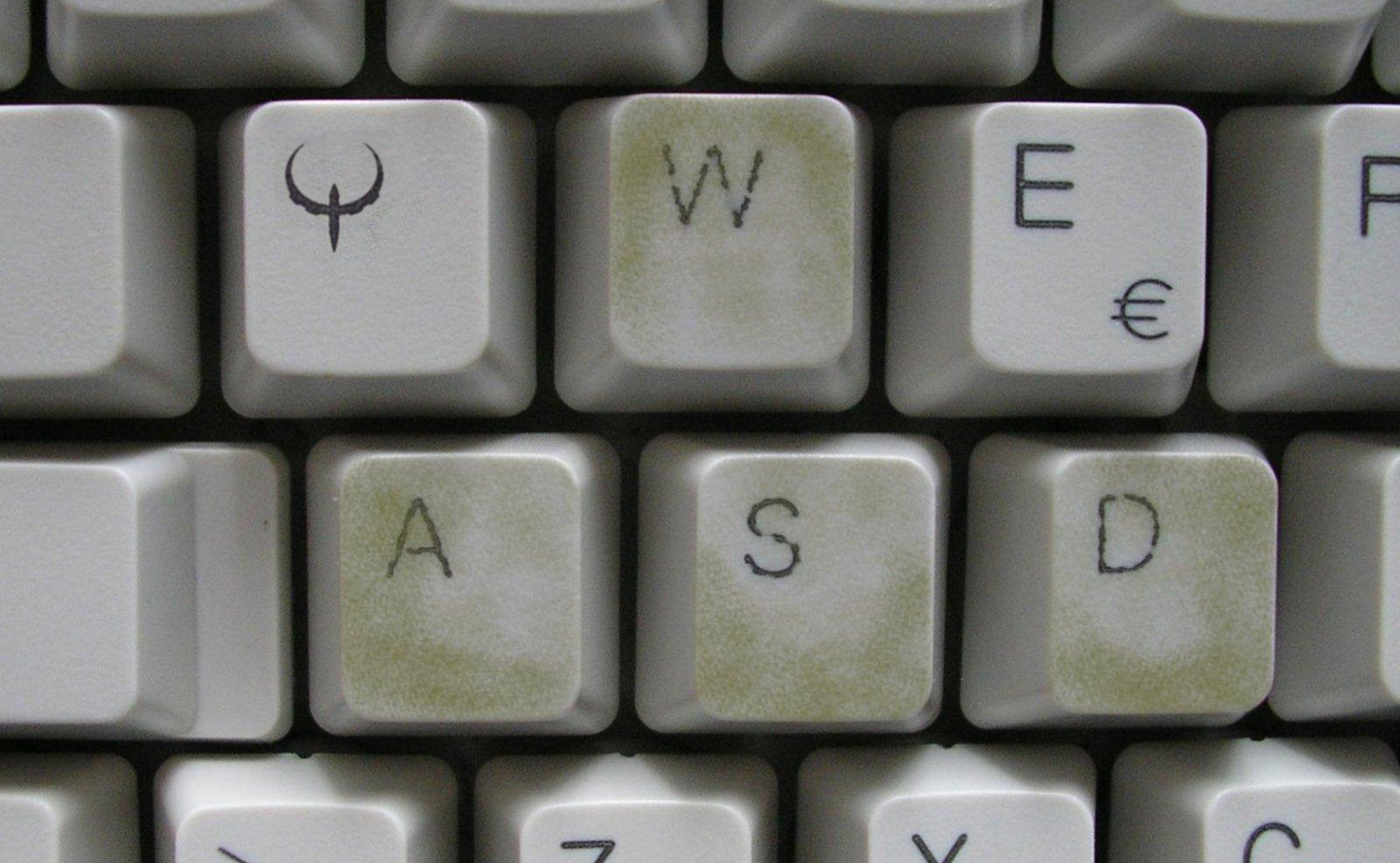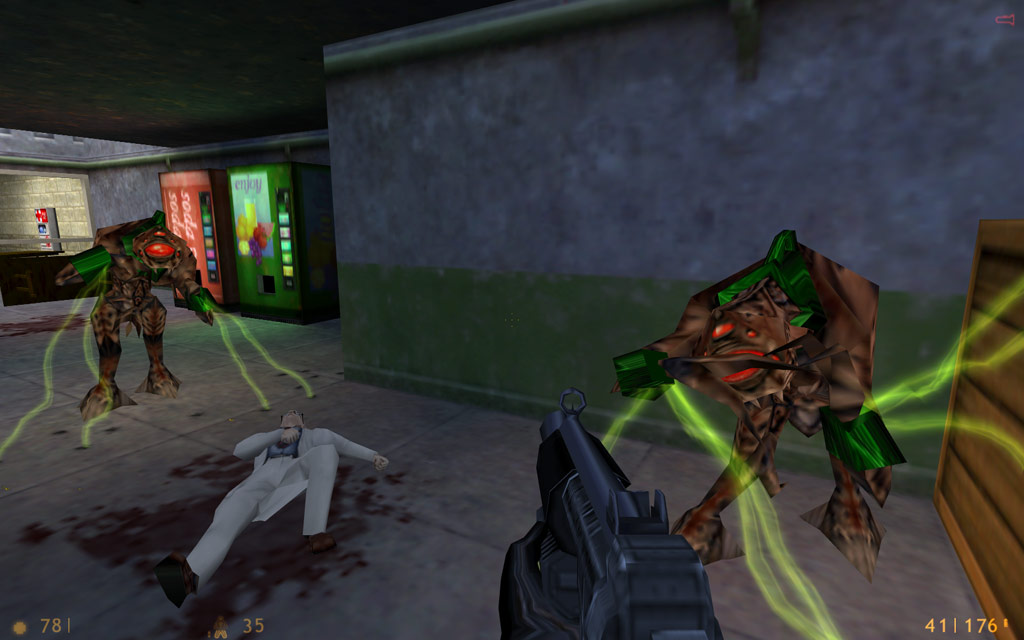How WASD became the standard PC control scheme
Had history gone differently, it might have been EDSF or even ASXC.

WASD feels inevitable today. Once mouselook became standard in 3D games, it made little sense (at least for right-handed players) to hold your left arm across your chest to reach the arrow keys. The WASD keys were more comfortable, and offered easy access to Shift and Space. But even though WASD seems like the obvious choice now, far fewer players used it 20 years ago.
Our favorite four letter word was never a foregone conclusion, and didn't become standard through some gaseous enlightening that spread to every PC gamer simultaneously. The new movement scheme took several years to catch on, and while we can’t know whose fingers found their way to WASD first, we do have a good idea of who popularized the style: the greatest Quake player in the universe, Dennis “Thresh” Fong.
Fong made history when he took home John Carmack's Ferrari 328 after winning the first-ever nationwide Quake tournament in 1997. And when he won that tournament, defeating Tom "Entropy" Kimzey on Castle of the Damned, his right hand was on a mouse, and his left hand was perched over the four keys we now consider synonymous with PC gaming. But even then, not everyone played that way.
His brother was playing with a keyboard and trackball, and he was winning.
In the early days of first-person shooters, Fong says the keymappings were all over the place, and even the great Thresh had only just started to play with a mouse at all. Imagine him just a few years before, sometime around 1993, as a teenager losing a match of Doom against his brother Lyle. Like many Doom players, Fong used only the keyboard. Without the need to look up or down, it was a natural choice—so much that using a mouse was even considered weird. His brother, however, was playing with a keyboard and trackball, and he was winning. It wasn’t every game—both were excellent players—but Lyle won enough that one summer Fong decided he had to learn to play with a mouse. After that, he was unbeatable.
“Right after I made that switch, my skill improved exponentially,” says Fong. “Pretty much, from then on, I never lost.”
It took some experimentation—including a strange attempt to move with WADX—but Fong settled on WASD and has been using it since Doom. Did he invent the scheme? No, probably not. Others were also gravitating to the left side of the keyboard for Doom at the same time. But without Fong's influence, the default could have ended up different. It might have been EDSF, or stranger configurations like ZXC to strafe and move backwards, and the right mouse button to move forwards. Some early shooters bound movement to the arrow keys. In 1994, System Shock used ASDX, while Descent used AZ for forward/reverse and QE for banking (if you didn't happen to have a joystick).
Fong tells us he even knew a player who used ZXCV to move.
The biggest gaming news, reviews and hardware deals
Keep up to date with the most important stories and the best deals, as picked by the PC Gamer team.
“I’m certainly not going to take credit for the creation of [WASD],” says Fong. “I stumbled across it. I’m sure other people started using it as well just based on what was comfortable for them. I definitely think I helped popularize it with a certain set of gamers, particularly the ones that played first person shooters."

It’s likely that he did. The very concept of a professional gamer was new at the time, and Fong was well-known on the west coast as the best player around. As Fong’s celebrity grew, the one question everyone asked him was: “What’s your config?” His answer could be most readily found in Thresh’s Quake Bible, which describes the WASD formation as an “inverted T.” And his guide carried weight. Even before his success as a Quake player, Fong was a Doom champion, and so people imitated him, just as the kids at the basketball court by my house spend far too much time trying to hit Steph Curry’s 30-foot shots.
The evidence can be found on old bulletin board systems. In one thread from 1997, a poster recommends using Q and E to strafe and A and D to turn. Another suggests using the keypad for movement, and someone else says they use A, Shift, Z, X. It wasn't the case that everyone simply gravitated to the 'obvious' choice of WASD or ESDF, and in another thread, we see how Thresh's performance in the Quake tournament spread his style. His play was so impressive, the poster looking for his config speculates that it was impossible for him to turn so fast with a mouse.
Another legend, Quake programmer John Carmack, took note. “Even when I was hanging out with Carmack, wherever, at E3, random people would come up and he would hear them asking me what my configuration was,” says Fong. “So he ended up building a Thresh stock config into Quake 2.”
It was a relief. Not only could Fong sit down at any computer with Quake 2 and instantly load his configuration, every time he got the question, all he had to say was “type exec thresh.cfg.”

Convenient as it was, Fong doesn’t think the inclusion of his config was the main factor in the rise of WASD, and I’d agree. By the time Quake 2 was out, WASD was starting to feel like common knowledge. I used it, and I don’t remember hearing Thresh’s name associated with it at the time, though it’s possible his configuration entered my consciousness two or three people removed.
And yet games, strangely, took a while to catch up. Carmack may have bundled Thresh’s config with Quake 2, but when it released in 1997 the default controls were still arrow keys. A year later, though, that changed. If Thresh's Quake tournament win was WASD's first watershed moment, the second came in 1998 with the release of Half-Life. The Quake and Doom players at Valve—perhaps influenced directly or indirectly by Carmack, Thresh, and other top Doom and Quake players—included WASD in Half-Life’s default keyboard and mouse config, which helped solidify it as the first-person shooter standard.
Valve engineer Yahn Bernier checked Half-Life's original config file for us and confirmed it included WASD. "I remember finalizing this file (maybe with Steve Bond) during the lead up to shipping HL1 but don’t recall specifics about when WASD was settled on or really why. We probably carried it forward from Quake1…" he wrote in an email.
The same year, and less than a month after Half-Life, Starsiege Tribes also made WASD default. Quake 3 followed suit in 1999, and WASD's popularity grew even more. It was also the default binding in 2000's Daikatana, but Half-Life, Tribes, and Quake 3 probably had a bit more to do with its popularity.

I always rebind to ESDF.
Gabe Newell
There were still plenty of heretical control schemes in 1999—like System Shock 2's, which defaulted to WADX (and S for crouch). But WASD had momentum. If it wasn’t already ubiquitous by 2004, World of Warcraft defaulting to WASD codified it for millions of PC gamers. Now it’s in RPGs and MOBAs and even strategy games, controlling camera movement over maps.
Interestingly, Valve boss Gabe Newell doesn’t use WASD. “I personally don't like WASD as it takes your hand away from your typing home keys,” he wrote in an email to PC Gamer. “I always rebind to ESDF.” Newell's not alone there. Do a little Googling and you'll find plenty of people arguing that ESDF is the more natural configuration.
More surprisingly, another Half-Life developer, level designer Dario Casali, also rejects WASD. Instead, he prefers ASXC. “It feels natural to me, where WASD feels odd,” wrote Casali. “But lots of people scoff at my config.”
What would PC gaming be like had EDSF or ASXC been Half-Life’s default? No offense intended to Newell or Casali, but I shudder to think of it. ASXC just sounds bonkers to me. Newell's fairly commonplace ESDF is more palatable, but as Thresh echoes, it feels harder to hit Shift and Control while easier to mispress one of the surrounding keys. For me, Thresh, and millions of PC gamers, it’s WASD for life.
You can read more about the history of Quake in our retrospective.
Wes Fenlon also contributed to this article.

Tyler grew up in Silicon Valley during the '80s and '90s, playing games like Zork and Arkanoid on early PCs. He was later captivated by Myst, SimCity, Civilization, Command & Conquer, all the shooters they call "boomer shooters" now, and PS1 classic Bushido Blade (that's right: he had Bleem!). Tyler joined PC Gamer in 2011, and today he's focused on the site's news coverage. His hobbies include amateur boxing and adding to his 1,200-plus hours in Rocket League.

